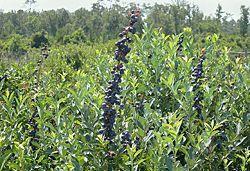
Gupton and Pearl, two highbush blueberry cultivars developed by US Department of Agriculture (USDA) researchers in Poplarville, Mississippi, for the early fresh market, are now making their way into production.
Both growers and consumers stand to benefit from the new varieties, which have been adapted to growing conditions in the southeastern US and provide high yields of firm, medium-to-large berries with a light blue colour and a high soluble-solids content, according to a USDA news statement.
Stephen Stringer, a geneticist with the USDA’s Agricultural Research Service (ARS), said that so far there has been limited acreage of southern highbush blueberries in production because “their lack of vigour has made them difficult to grow”.
Gupton and Pearl are different to other blueberry varieties because they were derived from crosses made among southern highbush germplasm with improved adaptation to the southeastern US, according to Stringer.
In Mississippi field trials, Gupton and Pearl flowered in mid to late April and were ready for harvest approximately 21 days before the earliest ripening rabbiteye cultivars, the predominant type grown in the south.
Gupton, released in 2006, and Pearl, released in 2010, are finding their way into crop fields and nurseries as more propagative material becomes available from tissue-culture operations and softwood cuttings, the USDA said.
Several nurseries have requested Pearl, and some Mississippi growers already have planted Gutpon in small commercial plots, Stringer reported.
Michigan, Maine, New Jersey and other northern states lead US blueberry production, but year-round demand for the antioxidant-rich berry has given southern growers a chance to tap into the trade, especially the early-ripening fresh market, for which the USDA said southern highbush blueberries are ideally suited.



